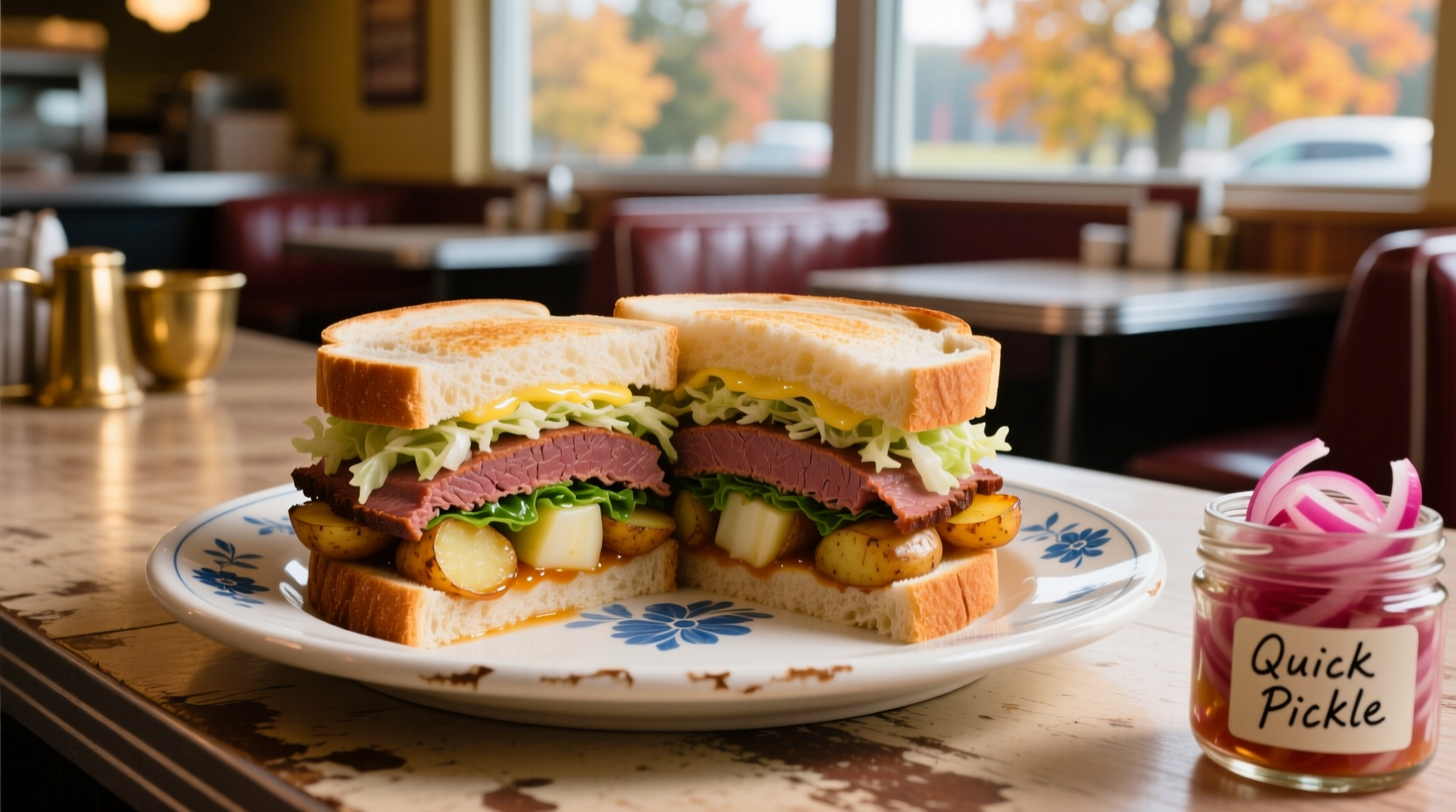Master the classic St. Patrick's Day favorite with this detailed guide to cooking corned beef and cabbage that delivers melt-in-your-mouth results every time. Forget tough, salty meat or mushy vegetables—this approach balances traditional preparation with modern food science for consistently delicious outcomes. Whether you're cooking for a holiday celebration or a comforting weeknight meal, you'll learn exactly how to select quality ingredients, avoid common pitfalls, and create a balanced dish that honors its Irish-American heritage.
Essential Ingredients Checklist
Start with these quality components for authentic flavor and texture:
| Ingredient | Quantity | Preparation Notes |
|---|---|---|
| Corned beef brisket (with spice packet) | 3-4 lbs | Choose flat cut for even cooking |
| Green cabbage | 1 small head | Cut into 2-inch wedges |
| Yukon Gold potatoes | 6 medium | Peel and quarter |
| Carrots | 4 large | Peel and cut into 2-inch pieces |
| Onion | 1 large | Peel and quarter |
Step-by-Step Cooking Process
Preparation Phase (15 minutes)
Rinse the corned beef under cold water to remove excess surface salt—this crucial step prevents oversalting while preserving the cure's flavor. Place the brisket fat-side up in a 6-quart Dutch oven or stockpot. Add enough cold water to cover the meat by 1 inch (about 8 cups). Include the included spice packet plus these flavor enhancers:
- 1 tablespoon whole black peppercorns
- 2 bay leaves
- 4 garlic cloves, smashed
- 1 tablespoon brown sugar (balances saltiness)
Cooking Timeline
Follow this precise schedule for optimal results:
| Time | Action | Internal Temp |
|---|---|---|
| 0-2.5 hours | Simmer brisket covered | 130°F → 145°F |
| 2.5 hours | Add potatoes and carrots | 145°F |
| 2.75 hours | Add cabbage wedges | 145°F |
| 3 hours | Remove from heat | 145°F+ (safe temp) |
Bring the pot to a gentle simmer over medium heat (do not boil), then reduce to low heat. Skim any foam that rises to the surface during the first 20 minutes. Cover and maintain a bare simmer—bubbles should barely break the surface—for 2.5 hours. This slow cooking breaks down connective tissues without toughening the meat.
According to USDA Food Safety guidelines, corned beef reaches safe eating temperature at 145°F with a 3-minute rest period. Our extended cooking time ensures tenderness while maintaining food safety standards (USDA Food Safety).
Vegetable Addition Sequence
Add vegetables in stages to prevent overcooking:
- At 2.5 hours: Add potatoes and carrots (denser vegetables need more time)
- At 2.75 hours: Nestle cabbage wedges into the broth
- Maintain gentle simmer for final 30 minutes

Avoiding Common Mistakes
Even experienced cooks encounter these pitfalls:
Salt Level Management
Modern corned beef contains less salt than historical preparations due to improved curing techniques. Always rinse the brisket before cooking, but don't skip the included spice packet—its balanced blend of mustard seed, coriander, and cloves creates authentic flavor. Taste the broth before serving; only add additional salt if needed.
Slicing Technique Matters
Rest the cooked brisket for 10 minutes, then slice against the grain with a sharp knife. Cutting with the grain creates tough, stringy pieces. Look for the direction of muscle fibers and slice perpendicular to them for maximum tenderness.
Serving and Storage Tips
Serve immediately with mustard seeds warmed in the cooking liquid for traditional flavor. Leftovers maintain quality when stored properly:
- Refrigerate within 2 hours of cooking
- Store meat and vegetables separately in airtight containers
- Consume within 3-4 days for best quality
- Reheat gently in broth to maintain moisture
Food historian Maggie Campbell notes that corned beef and cabbage became popular among Irish immigrants in America during the 19th century, adapting traditional Irish bacon and cabbage using more affordable cured beef (Food Timeline). This historical context explains why the dish is more associated with Irish-American culture than contemporary Ireland.
Troubleshooting Guide
Meat Still Tough After Cooking
If your brisket remains chewy, return it to the pot with additional liquid and cook 30-60 minutes longer. Toughness usually indicates insufficient cooking time—the collagen needs adequate time to convert to gelatin. Check temperature with a meat thermometer; it should reach at least 190°F for fork-tender results.
Cabbage Turns Mushy
Add cabbage during the final 20-25 minutes of cooking. Overcooking breaks down cabbage's structure rapidly. For crisper texture, blanch cabbage wedges separately and add to serving plates rather than cooking directly in the broth.
Expert Recommendations
Professional chefs emphasize these often-overlooked details:
- Use the cooking liquid as a flavorful base for第二天的汤 or gravy
- Add a splash of apple cider vinegar during the last 15 minutes to brighten flavors
- Flat-cut brisket provides more uniform thickness than point-cut for even cooking
- For deeper flavor, brown the brisket in a hot pan before simmering (optional step)











 浙公网安备
33010002000092号
浙公网安备
33010002000092号 浙B2-20120091-4
浙B2-20120091-4